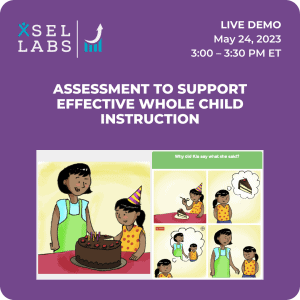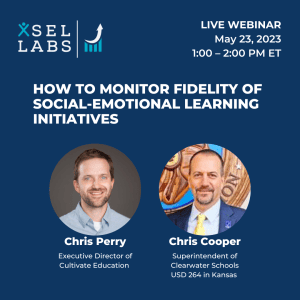On the Importance of Standing in Each Other’s Shoes
The theme of this year’s SEL Day is “Finding common ground, pursuing common good.” Considering… well… everything, this could not be a more perfect theme for SEL Day. One of the reasons the SEL Day theme is so apt today is that we humans seem to be running low on empathy and need to work on doing better at finding common ground and pursuing the common good.
I’m not talking about world events or domestic political squabbles (though those might also reflect an empathy deficit). Instead, I’m talking about the ability of children and youth to stand in each other’s shoes, understand someone else’s point of view, and accurately surmise another’s intentions, wants, and needs.
The Perspective-Taking Gap
My evidence? Our partner districts administer our SEL competency assessments to tens of thousands of children every year. One of the competencies we measure is social perspective-taking. This year, we’ve noticed that students’ scores on social perspective-taking are lower than those in other areas, and this finding cuts across school districts reflecting a vast diversity of student backgrounds.
This is important. Just consider for a moment how heavily children rely on perspective-taking to succeed in school and life. Social perspective-taking helps children coordinate their words, behavior, and actions in interactions with others. In activities as wide-ranging as a fourth-grade group project, a basketball game, or a group of children on a playground, success rests heavily on children’s ability to understand each other’s points of view so they can work out a coherent way forward together.
Children also use social perspective-taking to make friends and deepen those friendships. For younger children, for example, knowing how and when to take turns during social chit-chat depends on reading cues about others’ intentions and feelings. For all youth, knowing what someone else is thinking and wants provides essential clues about, for example, when a joke will make everyone feel connected or when a helping hand is in order. Navigating the intricacies of daily interactions and friendships requires children to be attuned to others’ points of view.
The Impact of a Decline in Perspective-Taking
So, what are the implications of a collective drop in children’s perspective-taking skills?
First, to the playground: Many educators we speak with describe difficulties children have navigating everyday challenges like deciding whose turn it is. After recess, children come back to class more upset than usual after a disagreement with a peer and at a complete loss about how to work it out. More than one teacher has said that children can’t seem to understand what others want and how to figure out what to do when perspectives differ. Those same teachers report that this is more pronounced than before the pandemic.
Beyond the dust-ups on display on the playground, which are visible for all to see, the drop in children’s perspective-taking skills affects children in less visible ways. For example, many of our partners administer a brief school climate survey. Students say how much they agree with statements about how safe they feel at their school, how connected they feel to adults and other children, and how supported they feel as learners. Unfortunately, this year the statement endorsed by the fewest students has been “Kids at my school care about me.” In other words, many kids don’t feel like their peers care about them very much.
To review:
- Children have a hard time understanding each other’s points of view.
- Not many children feel that other children care about them.
Circumstantial though the evidence may be, these two facts, together with what educators are reporting in the classroom and beyond, strongly suggest that children are isolated from one another and today, more than previously, lack some of the essential skills needed to connect with their peers. The isolation, in turn, undoubtedly contributes to elevated rates of anxiety and depression.
Addressing the Gap
There is some good news here, however.
- Everyday conflicts between students provide the perfect context for coaching children to reflect on and articulate each other’s perspectives and work through differences of opinion. Teachable moments are a renewable resource, particularly in unstructured settings like the playground and lunchroom.
- Social perspective-taking can be taught, and lessons designed to do just that can be found in many different curricula, including a freely-available evidence-based program provided by Harmony.
- Outside of lessons explicitly focused on teaching social perspective-taking, teachers can give children opportunities to practice this skill throughout the day. When reading a story together, for example, teachers can ask children to reflect on and describe the thoughts, intentions, and points of view of different characters in the story. It’s literacy and SEL wrapped into one. And at least one literacy program, Focus on Social and Emotional Learning, incorporates SEL content into the reading materials.
- Finally, in a potential triple win, tried and true instructional approaches can help children develop social and emotional skills, connect with peers, and do better academically. Thoughtful cooperative learning strategies, including the Jigsaw Classroom, the Good Behavior Game, and complex instruction, support stronger positive peer connections and positive academic outcomes.
In celebration of SEL Day and in recognition of the importance of social and emotional learning, we are hosting a webinar in collaboration with our friends at Harmony called “Building Empathy: Measuring and Improving Perspective-Taking.” I hope you’ll join us. Regardless, I hope we can all take the theme of SEL Day, “Finding common ground, pursuing common good,” and commit to this important aspiration on SEL Day and in the weeks and months that follow.



